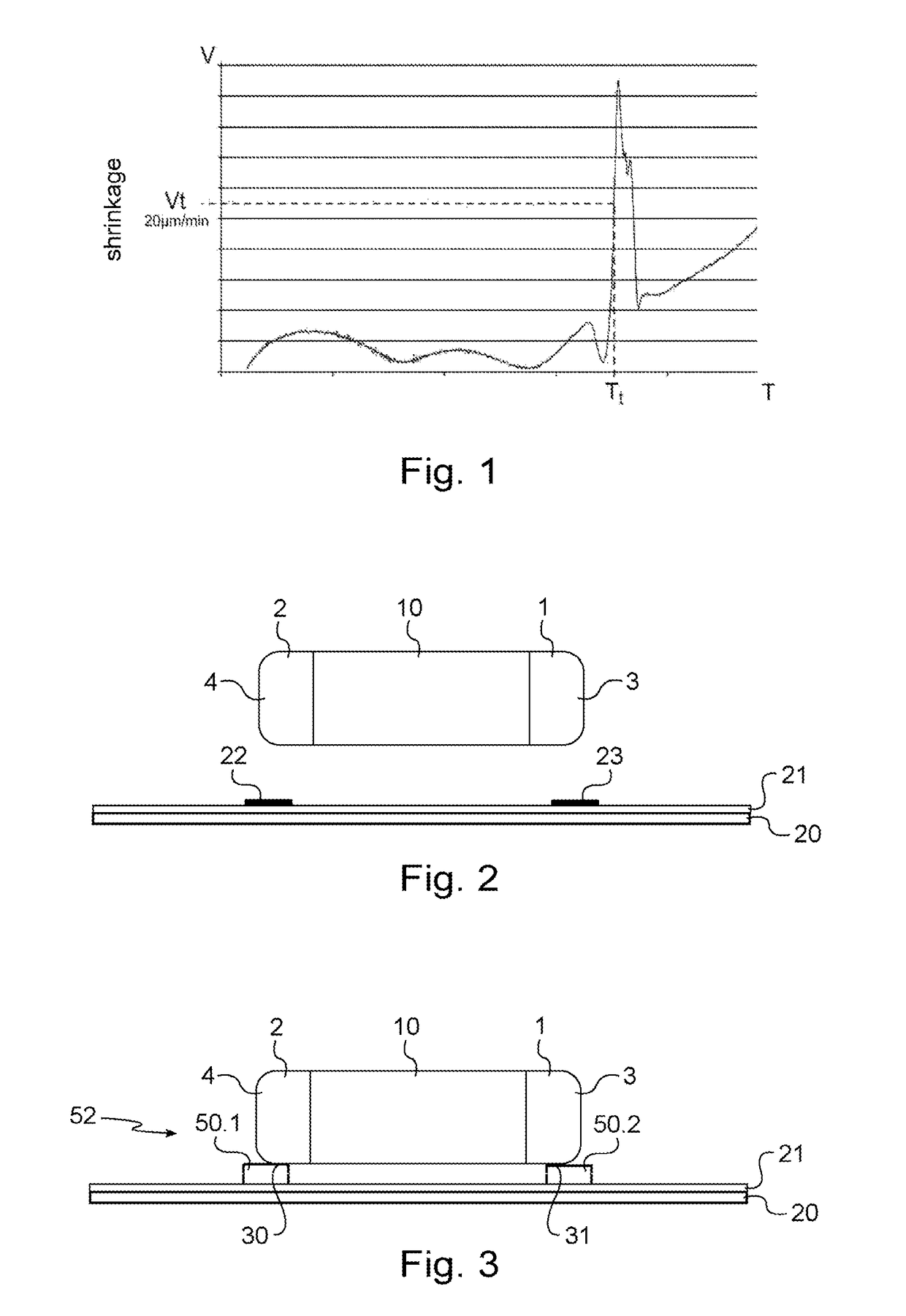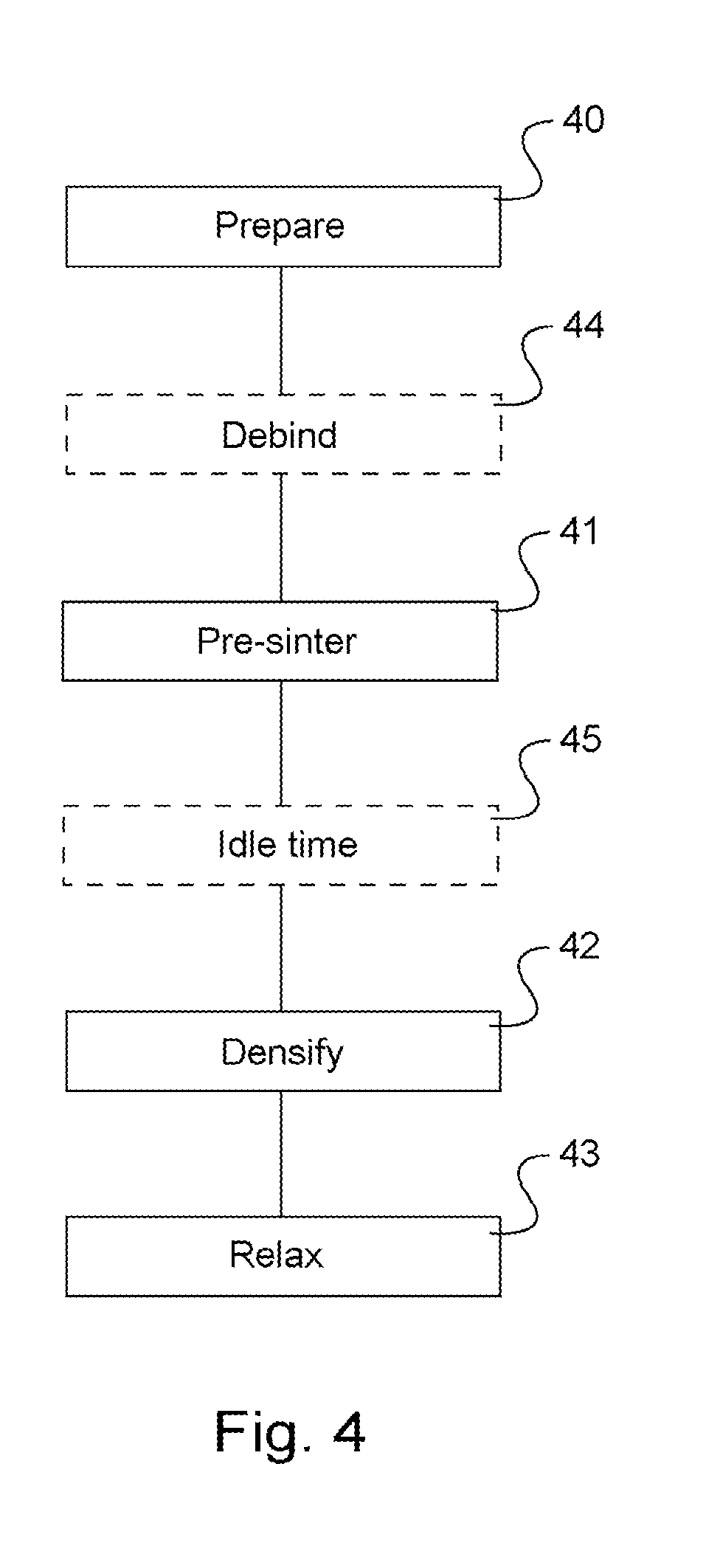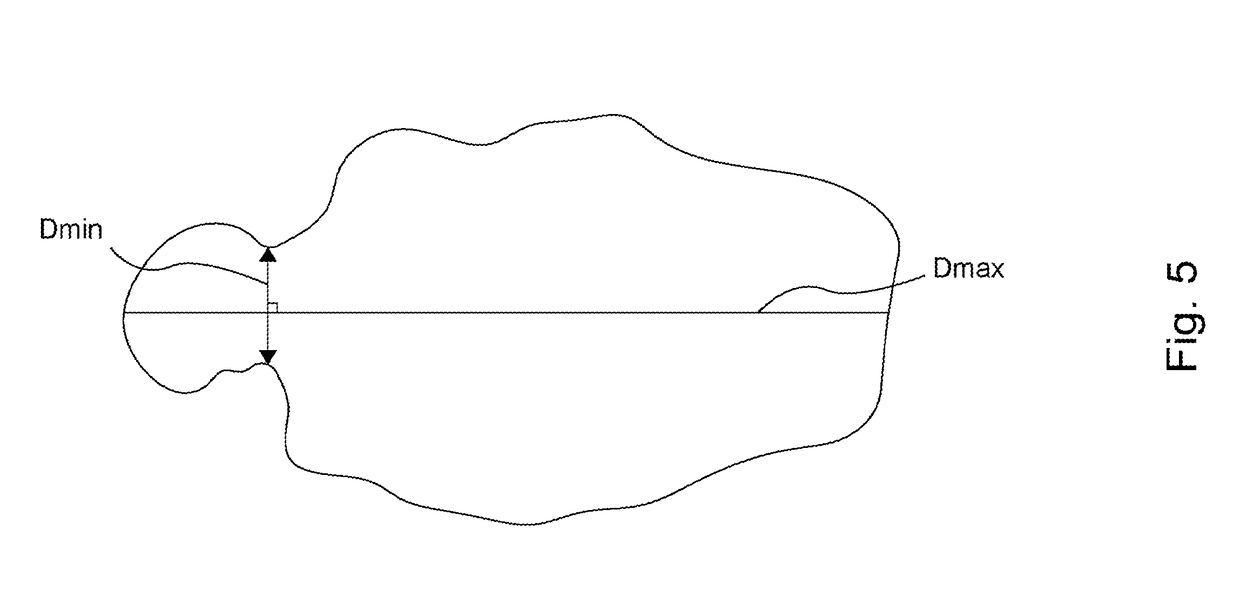Assembly method by silver sintering without pressure
a technology of silver sintering and assembly method, which is applied in the manufacture of electrolytic capacitors, transportation and packaging, and electrolytic capacitors, etc., can solve the problems of large mechanical stress variations, high toxic to humans and the environment, and assembly is exposed to fatigue wear, etc., to achieve the effect of improving the assembly ability
- Summary
- Abstract
- Description
- Claims
- Application Information
AI Technical Summary
Benefits of technology
Problems solved by technology
Method used
Image
Examples
Embodiment Construction
[0029]As a preamble to the following description of an implementation of the method of the invention, there is described an example of how to determine the temperature for activating diffusion at the grain boundaries Tt for a given sintering material, in this example a sintering paste 51 comprising metal particles.
[0030]After being dried in order to ensure any solvents it contains have been removed, a sample of the sintering material is introduced into a dilatometer, in this implementation in the form of a pellet having a height of 2 millimeters (mm), and a diameter of 6 mm. Starting from ambient temperature, the sample is heated along a temperature ramp, in this example, 30° C. per minute. During heating of the sample, variation in its height—in this case shrinkage—is measured. The term “shrinkage” refers to contraction of the powder sample during heating. A curve is then established plotting the shrink rate (obtained from the time derivative of the measured shrinkage value) as a f...
PUM
| Property | Measurement | Unit |
|---|---|---|
| Temperature | aaaaa | aaaaa |
| Temperature | aaaaa | aaaaa |
| Temperature | aaaaa | aaaaa |
Abstract
Description
Claims
Application Information
 Login to View More
Login to View More - R&D
- Intellectual Property
- Life Sciences
- Materials
- Tech Scout
- Unparalleled Data Quality
- Higher Quality Content
- 60% Fewer Hallucinations
Browse by: Latest US Patents, China's latest patents, Technical Efficacy Thesaurus, Application Domain, Technology Topic, Popular Technical Reports.
© 2025 PatSnap. All rights reserved.Legal|Privacy policy|Modern Slavery Act Transparency Statement|Sitemap|About US| Contact US: help@patsnap.com



